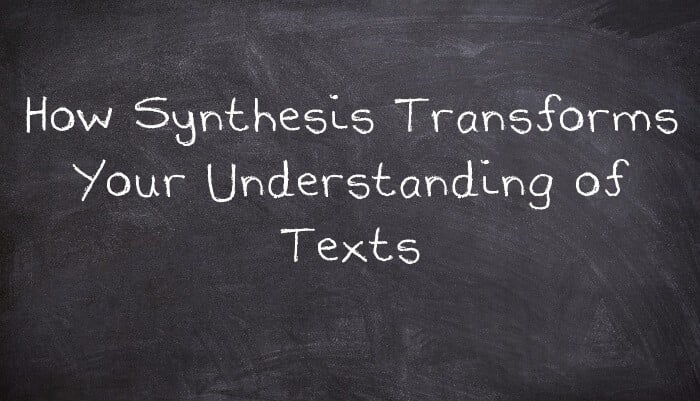Mastering the art of synthesis is more than just a reading strategy - it's a gateway to deeper comprehension and enriched understanding.
What is Synthesis?
Synthesis, the process of integrating various pieces of information, not only helps in identifying patterns and relationships but also fills knowledge gaps, making texts more relatable and digestible. By harnessing the power of synthesis, learners can boost their reading experience, making every piece of text a journey of discovery and insight.
How Synthesis can improve comprehension
Here are some additional examples of how synthesis can improve comprehension:
- Identifying patterns and relationships: Synthesis helps readers identify patterns and relationships between ideas, which can aid in comprehension by highlighting the connections between different pieces of information and making it easier to understand how they fit together.
- Filling in gaps: Synthesis can help readers fill in gaps in their understanding by integrating new information with prior knowledge and experiences, which can aid in comprehension by providing a more complete and coherent picture of the material.
- Making connections: Synthesis helps readers make connections between different ideas and concepts, which can aid in comprehension by highlighting the relevance and applicability of the material to their own experiences and prior knowledge.
- Seeing the big picture: Synthesis can help readers see the big picture by integrating individual pieces of information into a broader framework, which can aid in comprehension by providing a clearer understanding of the overall structure and purpose of the material.
- Identifying underlying principles: Synthesis can help readers identify underlying principles and themes, which can aid in comprehension by highlighting the underlying structure and meaning of the material.
- Making inferences: Synthesis can help readers make inferences by integrating information from multiple sources, which can aid in comprehension by allowing readers to draw conclusions and make connections that might not be immediately apparent from a single source.
- Evaluating information: Synthesis can help readers evaluate information by considering multiple perspectives and sources, which can aid in comprehension by helping readers to identify biases, inconsistencies, and gaps in the information presented.
- Creating new ideas: Synthesis can help readers create new ideas by combining and manipulating existing knowledge, which can aid in comprehension by allowing readers to generate new insights and understandings that might not have been possible through simple memorization or comprehension of individual pieces of information.
- Improving problem-solving skills: Synthesis can improve problem-solving skills by allowing readers to integrate information from multiple sources to solve complex problems, which can aid in comprehension by providing a more complete and flexible understanding of the material.
- Enhancing creativity: Synthesis can enhance creativity by allowing readers to generate new ideas and connections, which can aid in comprehension by providing a fresh perspective on the material and encouraging readers to think outside the box.
Overall, synthesis is a powerful tool for improving comprehension because it allows readers to integrate and manipulate information in a way that is meaningful and useful to them, and helps them to create new connections and understandings that might not have been possible through simple memorization or comprehension of individual pieces of information.
